E is for...Effectiveness
Build media plans with the Essentials of Effectiveness built-in
I cut my teeth in advertising working with entertainment clients.
Regardless of what we were releasing there would be a general shape of a media plan.
Key beats such as the teaser, the first trailer, the extended trailer, the premiere and the ratings and reviews would be made to feel more prominent than they otherwise might… so that the public would adopt that thing as the big thing of that week, weekend or week ahead.
Much of the prominence of a campaign was achieved through the sheer weight of investment. Something that’s being released just around the corner and can be seen on every bus and every street corner tends to have that effect.
Some of it through what we did with that investment and having fun with it.
Be that getting Sylvester Stallone running up (what were) the brand-new Digital Escalator Panels at Leicester Square for his Rocky comeback, Borat mimicking and mocking James Bond in ads we placed next to James Bond reviews or figuring out how to get The Silver Surfer to ride The London Eye.
All designed with one thing in mind.
To help whatever release we were promoting get more attention than it otherwise might.
We could broadly correlate the media investment towards agreeable outcomes, but rarely draw a statistically significant link.
At least within the capability of the planning team assigned to the businesses we were working with at the time.
It was only when we started working with EMI music, a pitch we won when they had just been acquired by Guy Hands Terra Firma, that I started to understand how media, advertising and comms could be the major contributing factor between what a business was selling and how much was sold.
Not with most of the labels though. Strong hobbyjob vibes.
However, we did have two unbelievably amazing clients.
Pete Duckworth & Steve Pritchard.
They were responsible for taking EMI’s back catalogue of artists and output that otherwise might not be selling, then packaging it up in different compilation albums and taking it to market.
People would receive 24 or 48 or sometimes even 72 popular tracks for the price of a few singles. Fantastic value!
Be that a Top Gear compilation with The BBC that incorporated the tracks that were playing out in Top Gear each week, or Phil Collins Greatest Hits that was relaunched in the wake of the success of a famous ad we’ll all be familiar with.
Their most famous creation though was the “Now that’s what I call Music” franchise that has spawned over 100 volumes and over 100M copies sold.
When it came to our interactions with most record-label execs, many of which were as you might imagine.
Eyes closed in meeting rooms nodding along to a new track, then building media plans reflective of what they and their peers were into, more so than the audiences they were trying to grow appeal for their artists with.
Pete & Steve were cut from a different cloth.
They used to come into our status meetings and tell us how the media we’d secured and run for them that week had performed.
They would know, based upon a regional spot in Channel 4 on a Sunday night in an episode of The Inbetweeners, exactly how many incremental sales and the attributable volume of $$$s and profit that were generated through that spot – and whether that was enough to keep them prominently positioned at point of sale in the UK’s leading supermarket chains the next week.
They would be able to forecast, on the fly, whether expanding that single spot from Channel 4 in The North into a broader buy in next week’s episode across additional regions, made sense in terms of revenue and profit based upon the relative cost of reaching each person in those other regions.
They would experiment whether leading with Artist X vs. Artist Y or Track A vs. Track B in one of those TV spots could crack the code and lead to more sales.
Watching them in action as a relative newcomer to the industry was quite the education.
Even if the nature of what they were doing wasn’t necessarily applicable across all clients and sectors, the spirit of how they operated switched a light on.
We’re nothing as an industry, an agency, a team or an individual if we can’t prove or indicate whether the things we’re recommending are working as intended.
That we’re harming ourselves if we don’t use what’s been learned before us, and by others, to build plans that are more likely effective.
That if we wish to be strategic advisors to our clients, it helps if we can talk more of the same language as counterparts in other parts of their organisation.
Therefore E… is for Effectiveness
Disclaimer.
I fully admit that I’m not an Effectiveness specialist.
If you’re really into up-skilling in this space I would urge you to spend some time with the works of Les Binet, Peter Field, Sarah Carter & Grace Kite – as well as the winning papers from The Effectiveness Awards from across the years.
It’s because of the outstanding work and generosity of these people, advertising now has more facts, and an increasing fluency, that better represents how investing in marketing communications can help brands deliver all types of outcomes.
Helping to reverse what was at one point a crisis in the effectiveness of our best work detailed in Selling Creativity Short towards something resembling a renaissance as Grace Kite of Magic Numbers introduced with her research with the Advertising Research Community.
As with all of my posts, I wish I knew what I’m sharing in this post from my first day in adland. Thankfully I know a little more now and am still learning, but will share my go-to references and rules of thumb in this post.
I’ll go through some foundational principles of how brands grow, before walking through 9 x practical implications to help you construct media plans with the essentials of effective media planning in mind.
Starting with a definition
Let’s start with a borrowed definition of Effectiveness from Les Binet & Sarah Carter’s brilliant How not to Plan.
These aren’t to be confused, but often are.
Effectiveness is the extent to which you have reached your goals.
Did you recruit or retain enough customers, profitably, to grow as required?
Efficiency that is often proxied as Return on Ad Spend (ROAS) or Return on Investment (ROI)… is how much effort was required to reach those particular goals.
These measures can be calculated through the below equations.
Both are important.
Although Efficiency Metrics should be used in service of Effectiveness Goals… not instead of them.
As the easiest way to increase the ROI of a brand’s marketing communications investment is to simply invest less, or to not invest anything at all.
A statistically sure-fire way to shrink your brands appeal, associations and potential trajectory of sales and revenue over time.
If effectiveness is about goals, where should marketers be shooting?
If you look at businesses in the same sector, those that have a strong brand or portfolio of brands more often than not will acquire more customers, that will buy from them more often, at higher margins relative to their competitors; thus helping contribute more revenue and profit back to the business and its shareholders.
All of the good things.
Each of these outcomes represents a different option for a brand manager to focus time, effort and resources on moving forwards to continue their respective paths to growth.
Raising Prices can increase margins, revenue and profit. A Stronger Brand will help you do this without losing customers.
Re-Marketing your existing customers can nudge them to buy you again, in a way that might be More Efficient than convincing a new customer to buy you.
However…
Sustained growth only comes from getting more customers to buy you, not by getting your existing customers to buy you more often
This sounds pretty obvious. Duh!
When How Brands Grow was published, the prevailing marketing chatter at the time was centred around creating brand love, devotion and even religions.
Social media platforms were fuelling the fire predicated on driving active engagement between brands and buyers that previously only happened in call centres.
However repeat purchase is largely a function of habit, not love or devotion.
Why?
Customers are loyal to repertoires of brands that meet their needs not individual brands themselves.
Not all the time, but most of the time.
This is born true in the data and is seen across multiple categories and markets. Below is an example from soft-drinks in the U.K. I pulled from Global Web Index.
40% of 7-UP buyers buy Coke.
52%!!!! of Pepsi buyers buy it too.
What the above starts to emphasise is that customers switching brands in and out of their metaphorical baskets, or bringing forward purchases they otherwise wouldn’t be making based upon…
What’s available… “We serve Pepsi Max here is that OK?”
What’s on discount… “DFS Sale Ends Sunday” or “40% off this detergent”
What’s being launched/promoted… “iPhone 13 Pro Max Now Available in Green”
There’s no point fighting it, it’s human nature.
So how can your brand thrive in this context?
The more customers a brand can acquire, the less vulnerable that brand becomes to switching; it will start to become a beneficiary of it.
This is because the group of people that buy different brands each time is a smaller % of larger brands overall customer bases, and vice-versa a larger % of smaller brands equivalents.
This is called The Law of Double Jeopardy born from marketing science that applies across most categories and markets meaning that the more customers you have the more Loyalty or in more specific terms Repeat Purchase Propensity will follow as visualised below.
Most brands repeat purchase propensity goes up in line with its market share.
A monopoly brand or business with 100% market share will get 100% of the repeat purchases by its very nature - nobody else is being bought or used.
Most other brands will broadly be in line, with the line of best-fit.
This isn’t true of all brands and markets as visualised, but is reflective of the mainstream majority.
Therefore, the primary goal for a brand strategy and associated media strategy, to grow sustainably, should be to acquire more customers, increasing its market penetration and market share.
Because in the act of growing those customers and growing your market share, those lovely repeat purchases, acquired much more “efficiently” will follow.
The importance of Indifferents in growing the numbers of customers a brand and business has
Many marketers are obsessed about their brands and quite rightly so.
The problem is that the consumer groups who reflect the largest opportunity for many brands to grow are much less interested in what your brand has to offer, and even less interested in what your brand might have to say about itself or its point of view of the world.
These brand or category Indifferents may not hang out with you in the metaverse, but they do contribute significantly to sales volume.
As per this famous example below from How Brands Grow…
30% of “Cola” category buyers only buy Coke once per year. 20% twice.
70% of the population don’t buy any.
Focussing resources on the 30% or the 20% to buy just one more time, or the 70% to try you, will result in a much larger lift in sales than by focussing on obsessives who already buy you most weeks of the year to buy you one more time.
This relationship between the volume of buyers and the frequency of purchase stays true across most categories.
The implication being brands that wish to continue growing for the long-haul need to think about how they compel more Indifferents who don’t buy them yet, or even buy the category yet, to buy them once, to create a broader group of buyers buying them, using them, being largely satisfied by them, then incorporating them into their go-to repertoire of brands for when those customers next find themselves in buying mode.
Hence why initiatives such as Share-a-Coke were such a success at bringing indifferents, in this case the 50% of Australian teens who hadn’t even tasted Coke, into or back into the brand in ways that don’t even require those indifferents to get off their bums to do so as their mates bought it for them : )
It’s in Indifferents where the greatest growth opportunity lies.
It’s cutting through Indifference where advertising needs to be at its most effective.
Acquiring new customers requires building mental and physical availability
To be successful in constantly acquiring new customers How Brands Grow introduced the super-simple construct of increasing both Mental Availability and Physical Availability.
Mental Availability being the propensity of your brand to come to mind in different buying situations.
Physical Availability being how present, prominent and relevant your brand or product is relative to the alternatives in those buying situations – when you’re at the supermarket, bar, shopping centre or watching an influencer video on TikTok.
I’m deliberately going to focus on the former in this chapter.
To grow a brands mental availability, enough category buyers need to be exposed to and experience your brand in ways that can bake it into the collective consciousness of the category buying base.
To be Top of Mind and/or to Come to Mind in buying situations.
The common term for this is Salience which is a) strongly correlated to purchases and b) something that a brand manager can directly influence if they choose to do so through broad reaching marketing and communications.
Salience isn’t just any old awareness though
We’re all familiar with many brands we’ll never find the need to purchase.
For awareness of a brand to be of use it needs to be actively associated with the actual reasons that people are coming to market within your category.
These reasons and subsequent moments are what HBG introduced as ‘Category Entry Points’ or CEPs – the ‘why’, ‘when’, ‘where’, ‘with whom’ and ‘with what’ of how categories are browsed, bought and used.
Don’t fall into the targeting trap though…
When thinking about traps media planners or vendors that support us might fall into, one could be to orient the entire media plan around connecting in those specific moments.
It makes intuitive sense.
Connecting with the right people, in the right moment, with the right message, that is becoming increasingly possible as digital media has become increasingly sophisticated.
Many a media-agency pitch has been led with that promise to help save a client money.
Let me illustrate why this isn’t that smart with a familiar brand.
Let’s go with KitKat
KitKat’s CEP or what I’d imagine it to be of “Breaks Between Meals” or “Breaks from Boredom” would represent an opportunity to build a media and comms plan around solely connecting with people in moments when someone might be taking or break, or fancy one.
They’re in the mindset and a simple nudge might get them over the line to buying you.
Whilst this may indeed be an efficient way to connect with potential customers, only reaching people at 11AM or 3PM when they’re leaving their desk, going to the kitchen, or getting back in their van – will result in reaching less people, each week, at higher frequency and at a higher cost per contact for each person you reach.
Not the best idea if you’re looking to grow your customer base.
To grow your customer base it’s more effective to Associate to that need-state or set of need-states in people’s minds, at scale, rather than exclusively try to connect in those specific moments through paid, owned or earned media.
In a way KitKat have done brilliantly for 30 years with a consistent line that has been built in broad reaching comms, alongside creative uses of context, with just a few examples visualised above.
Les Binet & Peter Field talk to this in their brilliant publication Media in Focus where they demonstrate effectiveness lies in balancing and blending Brand-Building communications in broad reaching channels, that can grow mental availability with Sales Activation tactics that seek to convert that mental availability into sales.
Whilst this all works well in theory…not all marketing communications we produce and distribute is experienced as intended in real life.
People pay attention to the elements across a marketing mix that catch their eye
Outside of marketing departments and agency meeting rooms, people encode mere fragments of what they experience in the world in their heads (across everything in the world, not just ads) to be recalled at a later date as and when it may suit them.
This has been biologically built into us since the days we were figuring out whether we should be scared of something coming into the cave, whether we could eat it, or whether we could mate with it.
These fragments and the associated feelings they generate (excitement, fear, desire, sadness, anger etc) are encoded into our brains alongside everything else we’ve experienced of that brand, the category it’s within, and the world at large.
Stronger brands do this in ways that are potent enough for their brand to be recalled next time someone finds themselves in a buying situation, or find themselves being pulled into one like at the supermarket in the above visual.
These Distinctive Brand Assets form the connection between what’s in our comms, what’s in people’s heads and what’s in people’s homes, hands and on the shelf
These elements that feature in communications, packaging, point of sale, store experience and product such as logos, typography, tone, colours, shapes and sounds – are called Distinctive Brand Assets by Byron Sharp or Visual Brand Assets by Phil Barden – but they only become genuine assets if enough people associate them with your brand, in ways that connect to those CEPs, rather than with anything or anyone else.
Let’s take a famous brand like McDonalds to illustrate this.
Which elements come to mind, or make McDonald’s come to mind when they come into view.
There’s Ronald.
There’s the Golden Arches.
There’s a menu filled with visually distinctive products like the happy meal, the big mac, the fries and even the boxes the fries come in.
There’s the I’m lovin’ it jingle that has been turned into a sonic signature that signs off all their comms.
There’s the red and yellow signs pointing right to the nearest restaurant.
There’s even Paul Ross, Jonathan Ross’ less famous brother that has featured as the voiceover in the UK advertising for as long as I can remember (well at least I think it’s him).
We associate these to McDonalds in our minds because year after year they are featured in their advertising and are integrated throughout the product experience so that when they come into view, or are heard on the radio, they immediately remind people of McDonalds, steer people in their direction and even go as far as triggering hunger.
The more distinctive assets a brand can craft, establish and reinforce over time which are exclusive to the brand, the greater chance you have of being remembered and recalled in potential buying situations, or trigger someone to come into market and thus purchased.
Whilst a media planner might not be responsible for the visual identity of a brand, 93% of communications are non-verbal and non-visual – AKA body language.
This might be a spuriously created number, much like our attention being shorter than a goldfish’s, but the importance of body language can’t be understated.
The choices a media planner makes on where a brand shows up and how represents a significant component of a brands body language – and the overall impression of a brand in people’s minds.
Especially in high-interest categories such as fashion or luxury, where the consideration of which formats, in which places and spaces, are given as much consideration as the associated planning deliverables.
Or for brands that are pushing progressive values (e.g. John Lewis), where they choose to invest their $$$s can find those values eroded pretty quickly if they’re found to be advertising with organisations at odds with those values (e.g. Daily Mail).
This is a topic so interesting I’ll dedicate an entire post to it at some point in the near future.
The strongest brands don’t just establish Distinctive Brand Assets; they flex them
Once these assets have been seeded, established and have become universally recognisable over time, brands can start to flex them to help convey things in ways that are truly unique to the brand, product or service.
A couple of nice examples here.
Be it when PlayStation fused the buttons from their controller, with London’s famous OXO Tower, or McDonalds transformed their golden arches into road-signs pointing people towards them.
Distinctive assets like these can help build stronger mental associations and create more potent physical availability, without necessarily needing separate initiatives, campaigns or activations to establish them.
Just through weaving in across the marcomms mix.
They’ll also last much longer than the incumbent Marketing Director or CMO.
However they and the feelings and associations they need to be attached to in people’s minds, do need a commitment from the business for brands to start building them at scale and benefitting from them for the long-haul.
Growing mental availability requires commitment
In The Effectiveness Code Peter Field & James Hurman made a statistical analysis and argument from mining the Cannes Lions database, that marketing effectiveness is heavily influenced by what they call Creative Commitment to landing, scaling and expanding what’s trying to be conveyed through marketing communications.
With Commitment being a composite measure of the media budget, the number of weeks on-air and the number of media channels utilised by a campaign or initiative to help scale its potential payback.
Commitment across the board though was appearing to wane.
To play a little part in redressing this I’ll use the rest of this chapter to try and arm you with some facts, figures and techniques that can build media plans with the essentials of effectiveness in-mind.
To help you build plans with conviction, that can hopefully unlock more commitment from your clients and colleagues.
1. Effectively…Invest for growth
According to a recent report created by Ebiquity & Econometricians Gain Theory, the average UK ad-campaign generates £1.51 of short-term profit and £3.24 in long-term profit for every £1 spent.
Think of that.
Even bang average campaigns in the most boring categories generate profit in both the short-term and the long-term.
With returns like these on offer it seems mad that brands would not commit to more advertising, more often, in channels where it is more likely to be effective.
2. Effectively…Balance “Brand-building” + “Sales Activation”
Earlier in the post I talked about balancing and blending tactics that can build mental availability, with tactics that can trigger it from sitting latent to helping close a sale.
Binet & Field’s The Long & The Short of It found a 60:40 split as optimal for maximising effectiveness but have expanded on this initial research further to draw out how that ratio looks across different categories, markets and lifestages of a brand or business.
Don’t just take their word for it though.
Based upon what you’re trying to achieve in the short-term and the long-term forecast which sales can be profitably extracted from the market using those “sales activation” tactics, alongside how much effort and subsequent investment might be required to move the needle on the mental availability side.
3. Effectively…Design for the attitude, but deliver to the collective
To give your brand the best chance of growing that mental availability and recruit more customers, by all means design communications with specific “attitudinal”, “brand” or “creative” audiences in-mind, but always seek to reach as many category buyers as resources allow throughout the calendar year to scale those associations as broad as is feasible or affordable.
A topic I dived into in A is for…Audience
Why…because the broader the reach, the broader the effects.
SIDENOTE | If your brand, product or service is creating a new category, or genuinely disrupting an existing one, you may wish to adapt your targeting according to the groups of people that will most likely embrace that change or adopt it at the time you’re bringing it to market.
The Bass diffusion Model can help you get a sense of how innovations spread through society, therefore can be used as a way to help new brands or offerings forecast their potential growth trajectory and understand what the implications are for targeting.
As the market expands, then expand your targeting accordingly.
4. Effectively…focus on single-minded messaging
Analysis of Millward Brown’s Link Test database has confirmed something that has always made sense; the more messages you try and communicate, the less likelihood there is of any message being remembered.
Be that within a single ad execution, or the logic rings true in running multiple campaigns at the same point in time talking about different things.
Don’t throw too many things at someone, or they’ll end up catching none of them.
You’ll end up creating a less effective plan.
5. Effectively…Use multiple channels, not endless channels
The creative commitment score in The Effectiveness Code gave a higher score to brands that activated a campaign or idea across multiple channels, that in doing so increased the reach and resonance of their message.
Whilst multi-channel reach is an important component of effective advertising, it’s important though to not spread too little investment between too many channels or the opposite effect can happen.
The IPA analysed 1000+ case studies in their databank, and reported that ROI increased by numbers of channels used, peaking at 3 and then starting to decline.
These are averages and should be treated with caution, but they do demonstrate that simply slicing up a media budget and allocating it across all potential channels may result in the damaging combination of reduced media effectiveness and higher creative production costs.
Not a great look.
Which couples up nicely with…
6. Effectively…Reach more people, across more weeks, to be more likely to come to mind, across more buying occasions
Good flighting might not deliver exponential gains, but bad flighting can wreck a campaigns ability to deliver meaningful returns.
There are multiple research points that indicate Continuity of communications being one of the most important levers at increasing the effectiveness of marketing communications.
As Peter Field & James Hurman allude to the longer a brand is willing to run something, is a literal demonstration of its Commitment.
Nielsen’s research noted that Weeks On Air is up alongside the strength of the creative vehicle and a brands relative SOV/SOM ratio in contributing the effectiveness of marketing communications.
With this in-mind, when flghting activity, look to add channels that can maximise 1+ reach for each week on-air, to the point of diminishing returns, across as many weeks is as feasible or affordable.
This is because the first exposure to an ad in any given week, is far more effective than the following exposures in that same week.
When practicing this theory in the wild Mars increased ROI between 20-40% across different markets by moving from a burst-led approach to a continuity approach.
7. Effectively… Wear ads in before thinking about if they have worn-out
Clients have the habit of becoming bored of their advertising, long before consumers do.
In many instances, new advertising is not allowed to ‘wear in’ before being changed.
New advertising provided it is of decent enough quality, will often improve in effectiveness over time as more media investment is deployed in making people familiar with it.
A case-study from Barclaycard showed that the introduction of a new campaign reduced its advertising effectiveness in Year 1 as it was still being “worn in”… only to exceed the previous campaign in Year 2 once people had started to become familiar with it.
Commit with conviction, to unlock that effectiveness.
Otherwise it might be more effective to stick with what you have.
Millward Brown dived into the topic of whether TV ads wearout and showed the numbers of GRPs required to reach >90% of the population as a proxy for “wear-in”.
If your investment falls significantly below these GRP levels you might argue running it for longer to extract the maximum effectiveness from that investment in creative production.
8. Effectively…Harness our superpower of creativity to generate disproportionate attention, associations and actions
The Effectiveness Code categorised the types of effects that the most creative marketing produces from the least to the most commercially impactful.
Be that individual campaigns aimed at driving fame, behaviour change or sales spikes; or activity designed to improve specific measures attributable to the health and potential wealth that might be created by a brand.
There are dozens of great examples within the report that do just that you can dive into with associated case study films.
I won’t focus on how we can help use our media prowess to create more of this type of work in this post, but if you’re struggling to find an evidence point to position more creative-led campaigns, or elements within them as vital to your colleagues or clients the following should help.
9. Effectively…Connect metrics across Business, Comms & Media KPIs
The last point I wish to make is that it’s critical to have a sense of what you believe will happen courtesy of your media investment, and be in a position to be able to measure whether it happened or not, before rather than after you finalise a plan and subsequent plan of action.
By correlating the relationship between…
The Business Objectives
e.g. An X% lift in Sales
The Marketing/Comms Objective
Therefore requires a Y% Lift in Salience as salience is most strongly correlated to Sales in FMCG as an example
The Media Objective
Therefore requires a Z% Lift in Ad Awareness as the creative has been pre-tested to demonstrate an associated Y% lift in Salience in a control vs. exposed test
…you will be better positioned to deliver what you require, or input on what is required by others.
With KPIs being another topic I’ll dive into more deeply in another post too : )
In Summary
Another monster post that only scratches the surface of this topic, but attempts to give you a sense of…
How brands serve the business
A business with a stronger brand or portfolio of brands than its competitors will help the business it serves acquire more customers, more often at higher margins.
How to grow the commercial potential of a brand
Quite simply, by building both Mental Availability that helps it come to mind in buying situations & Physical Availability that makes it easy to find and be bought.
Good media planning… can help brands grow that mental availability through broad reaching comms that are well branded.
Good media planning… can help brands make their physical availability more potent.
Be that by signposting people who are already in market, or through activations or promotions that might bring people’s next purchase forwards.
Balancing these emphasis points both within campaigns and across campaigns is the real skill of a 21st Century media planner.
Growth requires commitment and conviction
Multi-channel campaigns, that run for longer, that reach broad groups of category buyers, are more effective at recruiting customers year after year than standalone hacktics that do well with awards juries.
Help your clients, by helping them build the case internally to sufficiently invest in media to levels that can give the creative idea they’ve committed to the best chance of doing the job it has been designed to do.
Some essentials of effective media plans to refer to, to reference, to have in-mind
The nine I shared are by no means exhaustive, but are my go-to’s.
I hope you found some of them of use.
Please feel free to share any other references that work well for you in this space, or your interpretations of the above that help you out and I’ll add them to the post.
Until next time : )


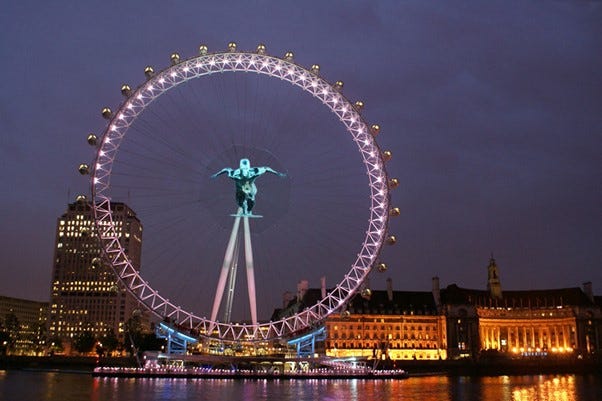








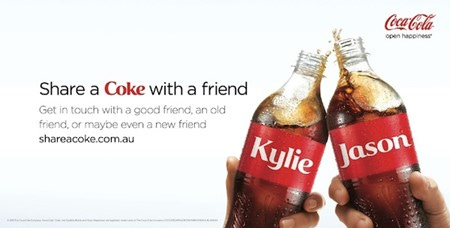
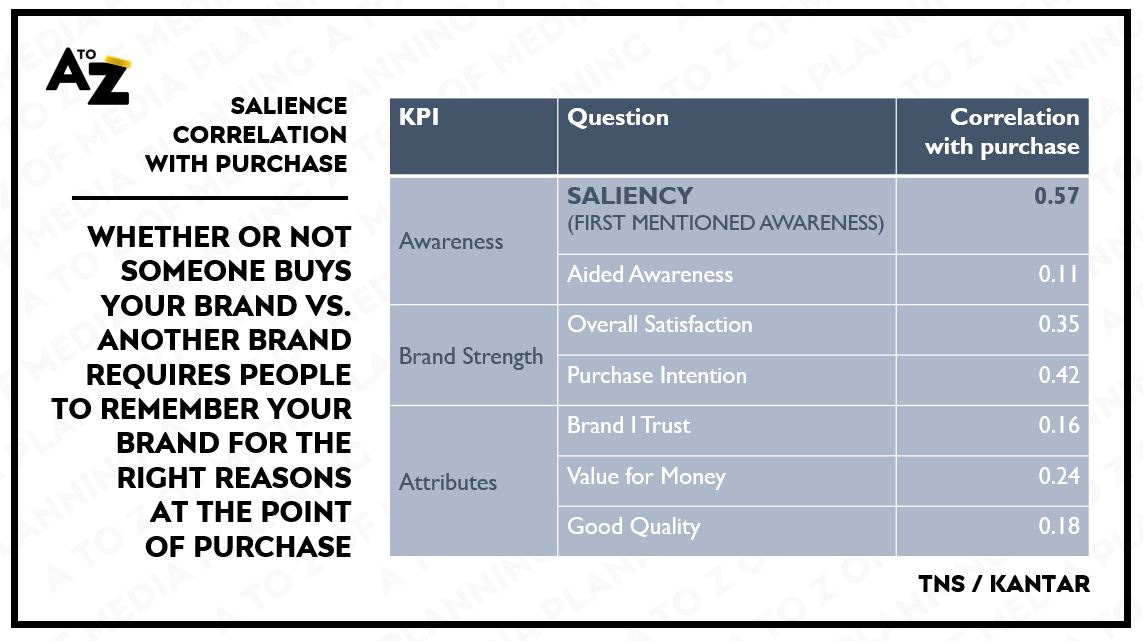




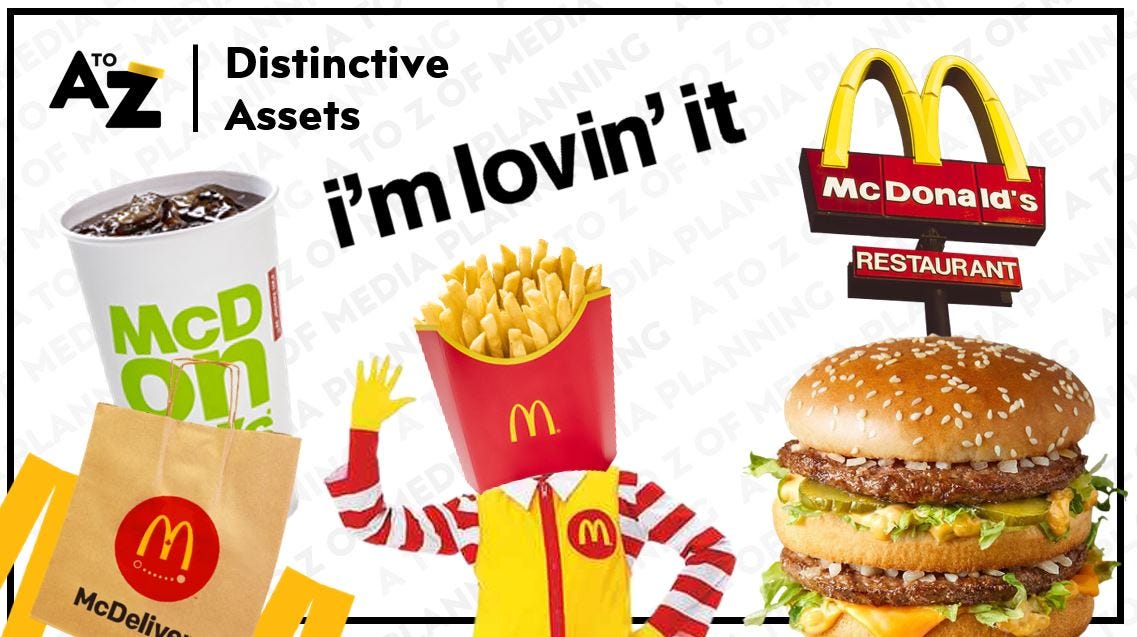


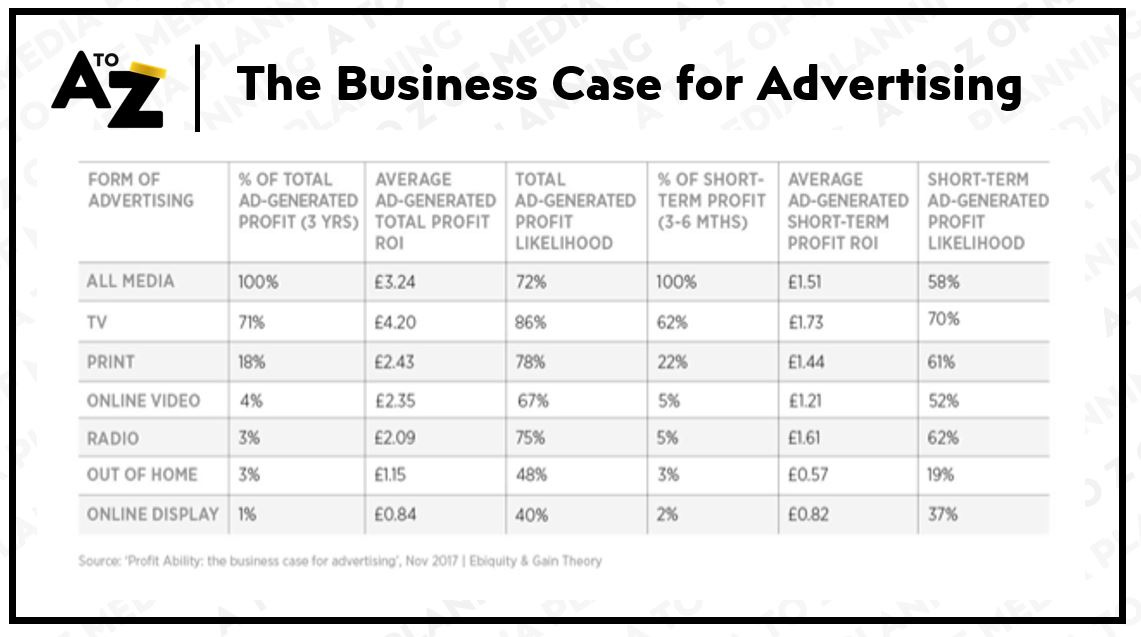

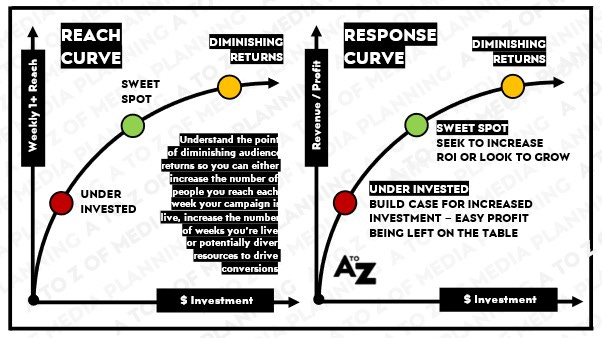
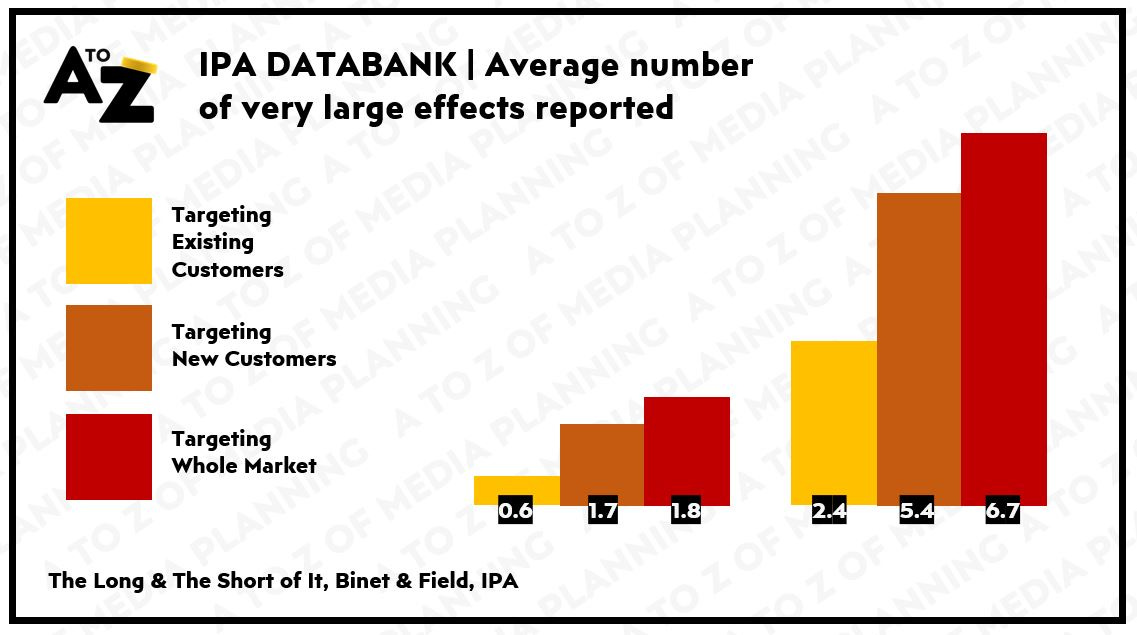



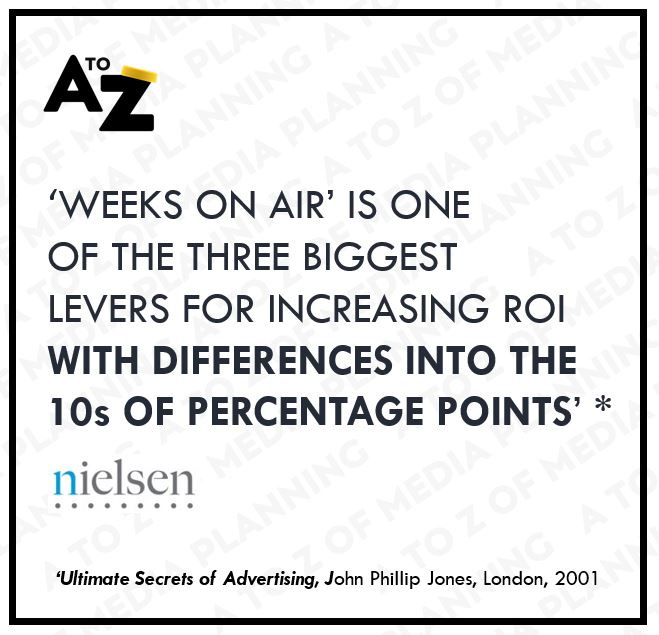
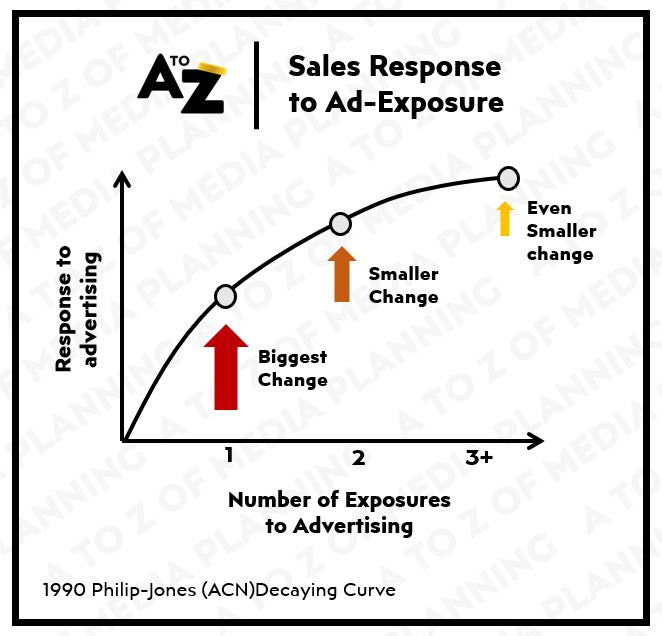
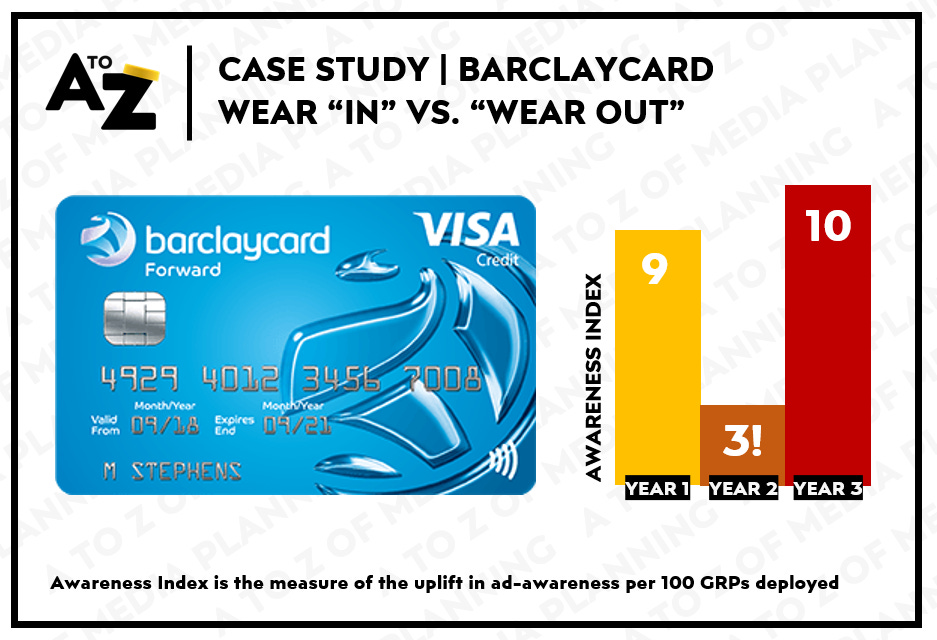



Blimey. Most comprehensive